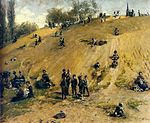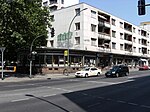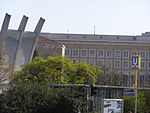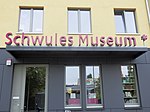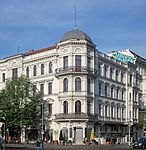Kreuzberg

Kreuzberg (German pronunciation: [ˈkʁɔʏtsbɛʁk] (listen)) is a district of Berlin, Germany. It is part of the Friedrichshain-Kreuzberg borough located south of Mitte. During the Cold War era, it was one of the poorest areas of West Berlin, but since German reunification in 1990 it has become more gentrified and known for its arts scene.The borough is known for its large percentage of immigrants and descendants of immigrants, many of whom are of Turkish ancestry. As of 2006, 31.6% of Kreuzberg's inhabitants did not have German citizenship. Kreuzberg is noted for its diverse cultural life and experimental alternative lifestyles, and is an attractive area for many, however, some parts of the district are still characterized by higher levels of unemployment. The counterculture tradition of Kreuzberg led to a plurality of votes for the Green Party, which is unique among all Berlin boroughs.
Excerpt from the Wikipedia article Kreuzberg (License: CC BY-SA 3.0, Authors, Images).Kreuzberg
Sixtusgarten, Berlin Kreuzberg
Geographical coordinates (GPS) Address Nearby Places Show on map
Geographical coordinates (GPS)
| Latitude | Longitude |
|---|---|
| N 52.4875 ° | E 13.383333333333 ° |
Address
Sixtusgarten 6
10965 Berlin, Kreuzberg
Germany
Open on Google Maps

